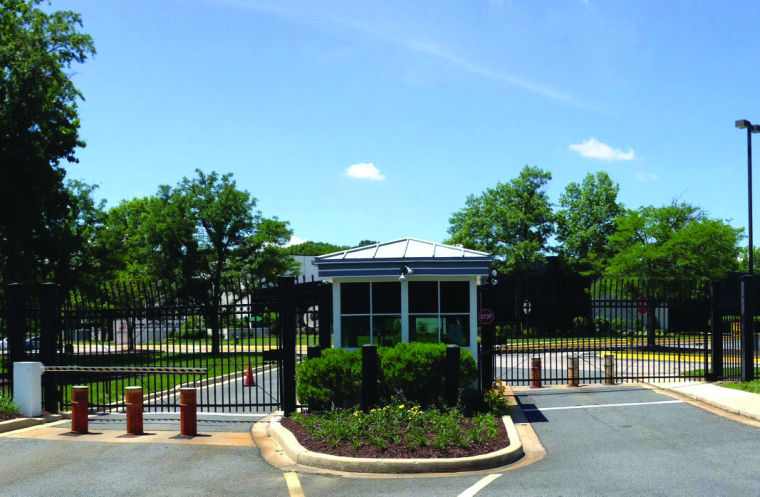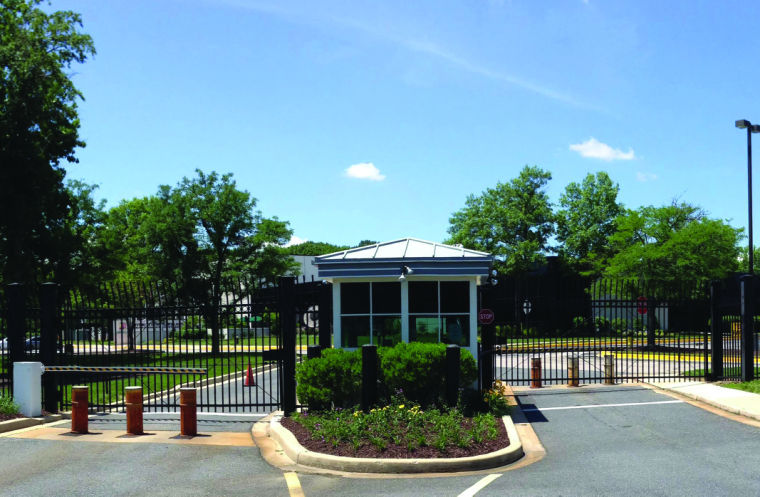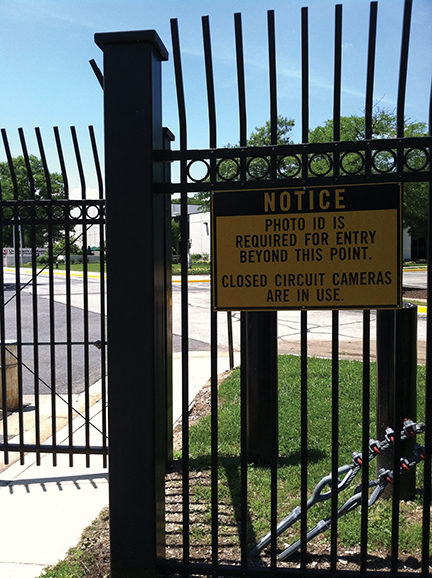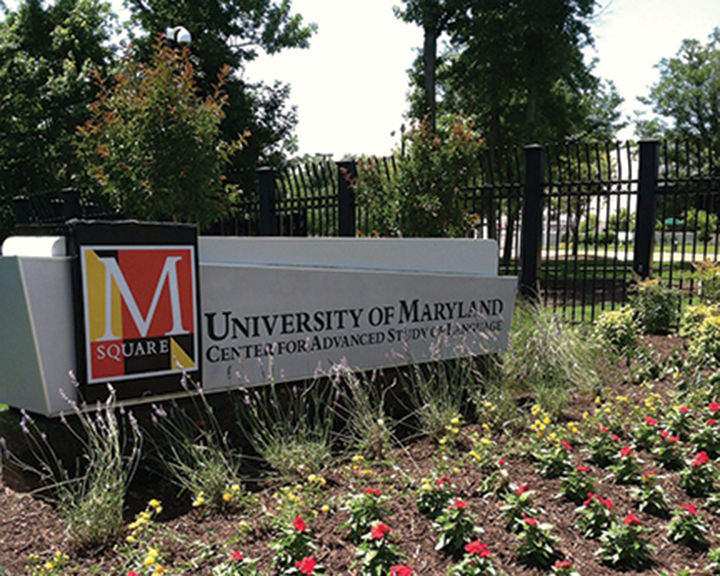Read the Constitution, not my emails. We the people, not see the people. In privacy we trust.
Thousands of protesters gathered on the National Mall on Oct. 26 to voice their disapproval of the National Security Agency’s domestic and international surveillance.
They carried signs like those above, scrawled with privacy puns and praise for whistleblowers Thomas Drake, Chelsea Manning and Edward Snowden. They jammed out to a performance of “Party at the NSA,” an anti-surveillance pop-rock anthem by Los Angeles-based group Yacht. The rally attracted attention from news outlets as far away as Iran.
But despite the rally’s fanfare, another struggle is much quieter. It takes place not in public forums such as the National Mall but in somewhere less visible: research laboratories, some of which are located at this university.
From PRISM and Upstream to programs not yet known to the public, the government has relied on research partnerships with the country’s scientists and public universities for years. But critics and supporters alike said reconciling traditionally open lab environments and the need to protect sensitive information is a continuing challenge.
IN THE BACKYARD
In June, news broke that Snowden, a former NSA employee and government IT contractor, had leaked evidence of two NSA surveillance programs to The Guardian. There was fallout. There was controversy. And there was a spotlight cast on this university, following Snowden’s admission that he had cut his chops with the NSA by working for a brief time at the Center for Advanced Study of Language.
The building itself, near the Herbert Wells Ice Rink off Paint Branch Parkway, is guarded by a tall electric fence and visitors must be let in by a security guard and escorted on the property.
The CASL isn’t new, and neither are the university’s connections with the NSA. The center was established in 2003 to serve the language needs of the Department of Defense, said CASL associate research director Mariah Bauer.
“The study of language provides one of the best mirrors into the functioning of the human mind/brain,” Bauer wrote in an email. “Increased proficiency is important to support global competitiveness as well as national security in addition to serving our fellow citizens, for whom English is not a first language.”
This university is an obvious choice for government research collaboration, said university President Wallace Loh. It’s large, it’s close by and it can provide a strong public support system for researchers.
Universities in general are prime locations for government projects, said Steven Aftergood, director of the Federation of American Scientists’ Project on Government Secrecy.
“Government agencies can benefit from the latest cutting-edge academic research and from access to the talent pool of university researchers,” Aftergood wrote in an email. “By strategically funding particular areas of research, agencies can also focus or redirect the academic research agenda towards topics of interest to them.”
The bounds of the CASL’s research labs reach far in the field of language and cognition: The center develops new language-learning programs for government officials and elementary school kids, studies how people learn languages most efficiently, and researches less common language dialects.
Following the Snowden leak, the CASL popped up on the radar of local media and critics of the government.
In a story chronicling Snowden’s background, The Guardian alluded to a “covert” university facility, later revealed to be the CASL.
But the CASL is hardly covert, and its leadership doesn’t hide the organization’s connections with the NSA. And it’s not just the NSA working there; clients requesting solutions can be from any organization within the intelligence community.
The NSA isn’t the cause of the facility’s high level of security, either, Bauer said. It’s just the nature of serving the intelligence community.
“The majority of our work is not classified, but we are in a position to collaborate with stakeholders throughout the DoD,” she wrote in an email.
Still, the NSA is one of their major clients, Bauer said, a fact the NSA has spoken proudly of in its literature. In 2009, The Next Wave, the NSA and Central Security Service’s quarterly and publicly available review of emerging technologies, dedicated an issue to the CASL’s multidisciplinary approach to language.
A SCIENTIST’S DILEMMA, A UNIVERSITY’S DUTY
For scientists and researchers, working within the bounds of the intelligence community poses philosophical challenges.
Which is more important: the public’s right to know or security? Are the quest for innovation and the need to protect secrets compatible?
Junior cell biology and genetics major Todd Waters still struggles with the issue.
Waters entered the military in 2003 and was stationed in Hawaii between 2005-08, then at Fort Meade until 2011. He worked for the NSA as a cryptologic linguist, charged with deciphering and translating communications.
Even from the inside, he said, the relationship between collaboration and secrecy was confusing.
“It was very collaborative with each other [in my section],” Waters said. “But we were separated from other departments, like analysis.”
Like pieces of a puzzle, a vast collection of departments and subdepartments make up the NSA and the broader intelligence community.
“You can be working in one sector and not see what’s happening in another,” Waters said.
From one leaker to the next, Waters said each piece of information revealed by Drake, Manning and Snowden was new and surprising to him. In his department, he said, the rules were clear: Focus on international communications. They didn’t dare look at non-military target interceptions.
But it became difficult to comprehend information when the lines blurred, he said.
“There are times when confidentiality is going to be important. And that needs to be understood, and there needs to be boundaries about what that implies and entails,” he said. “Every time an official tries to redirect the narrative, a new revelation happens and what they say turns out to be found out to be false.”
When it comes to research, Aftergood said the government doesn’t always have a right to secrecy. Aftergood is an outspoken critic of classified research and admits that with public institutions, the boundaries are muddled.
Congress has an absolute right to know what research is happening, he said, and the public should have access to research that isn’t applied specifically to military or intelligence technology. Those technologies, he said, are more acceptable for classification.
But throw a public university into the mix, he said, and that’s when things get especially unclear.
“Universities, almost by definition, are supposed to be ‘open’ institutions. So they are not a natural setting for classified research,” Aftergood wrote. “While government agencies are accountable to Congress, universities are accountable to their larger communities.”
At the CASL, 29 of the more than 133 employees are also university employees from various departments across the campus.
“They have to compartmentalize their work. The work they’re doing on campus is open, and the work they do at CASL is classified,” Loh said. “You live this schizophrenic existence.”
Loh only recently acquired security clearance for the buildings. Although the buildings are university-affiliated, his status as president previously meant little; just as anyone else, he had no authority to go beyond the building lobby.
SAFEHOUSE
Among scientists and intelligence leaders, the question is not whether information should be classified.
“We also recognize that every country has to engage in some research that is not designed to advance knowledge, per se,” Loh said. “It’s designed to advance the security interests of the country, and that kind of research has to be done on a classified basis.”
The government is entitled to its secrets from the public for safety, Loh said. Waters said national security could require secrecy. The public isn’t entitled to information if it jeopardizes their safety, Aftergood said.
The trouble is, researchers can’t agree on what defines that threshold.
Former NSA and CIA director Gen. Michael Hayden said the biggest challenge for intelligence officials is change. The world is constantly changing and relations are always shifting, he said, and the threshold that may be acceptable one day is too loose or too strict the next.
Sept. 11, 2001, was a pivotal moment — not just for those grieving, but also for national security. In an instant, Hayden was forced to make changes in how the NSA ran and what its priorities were. The planning for the attacks had come from inside American borders, eluding surveillance efforts focused abroad.
Those effects were felt at this university, and that was one of the reasons behind the CASL’s establishment.
There was an increased interest in the way people relate to those around them. When the “War on Terror” first arose, there was a need to focus on Middle Eastern languages. Cold War politics fell by the wayside, and language education moved from a focus on Russian dialects to Arabic, as the New York Times reported in 2004, and the CASL was one such government project helping to make the transition.
National security and democracy are a balance, Hayden said. There are trade-offs to heighten security, and it’s never completely stable, especially when it comes to research.
“Labs thrive on openness. You do have this clash of cultures,” Hayden said. “It’s a condition to be managed.”
The NSA isn’t perfect, Hayden said. It lacks transparent oversight — something that needs improvement in the wake of information leaks.
But transparency isn’t a panacea. It poses dangers, too, Hayden said, especially in the Internet age. People feel empowered; they have a forum for discussion, a plus for innovation. But the web also allows them to easily disseminate thousands of documents; the era of Drakes, Mannings and Snowdens is only beginning.
“The dark side of this is bad guys,” Hayden said. “We may stop the sharing that has let us be as efficient as we are.”







